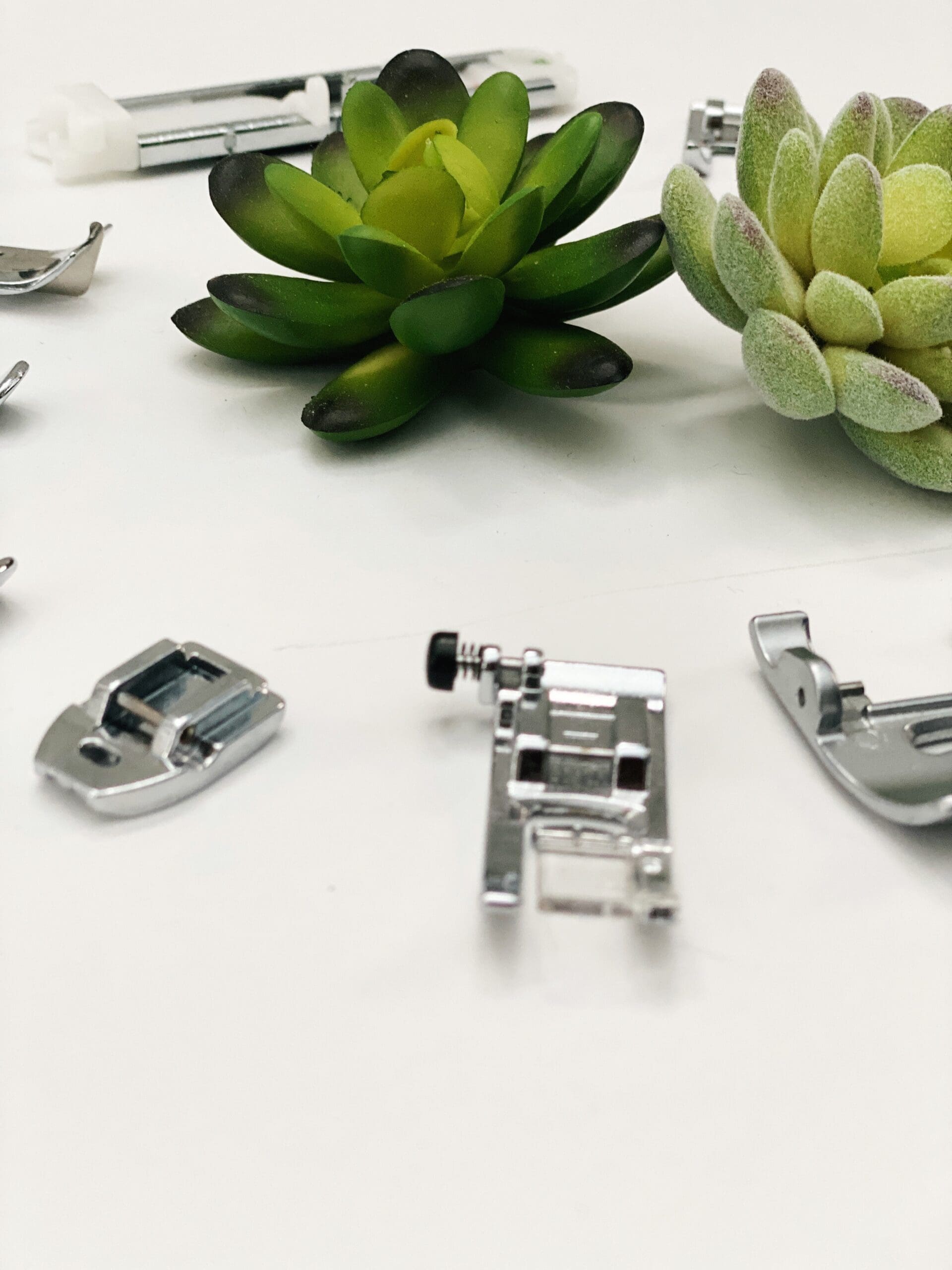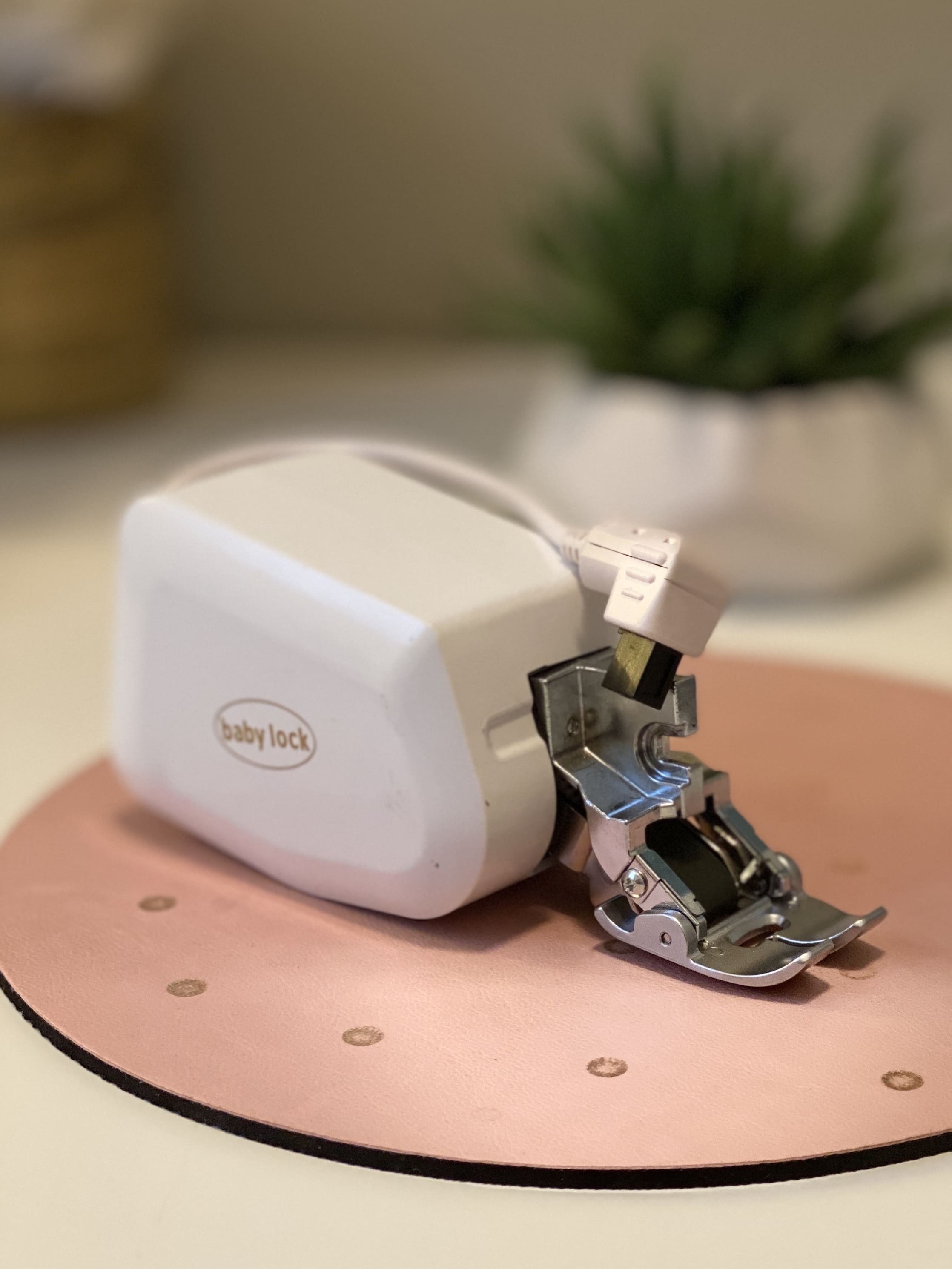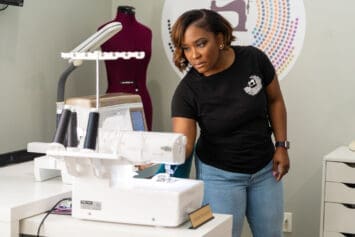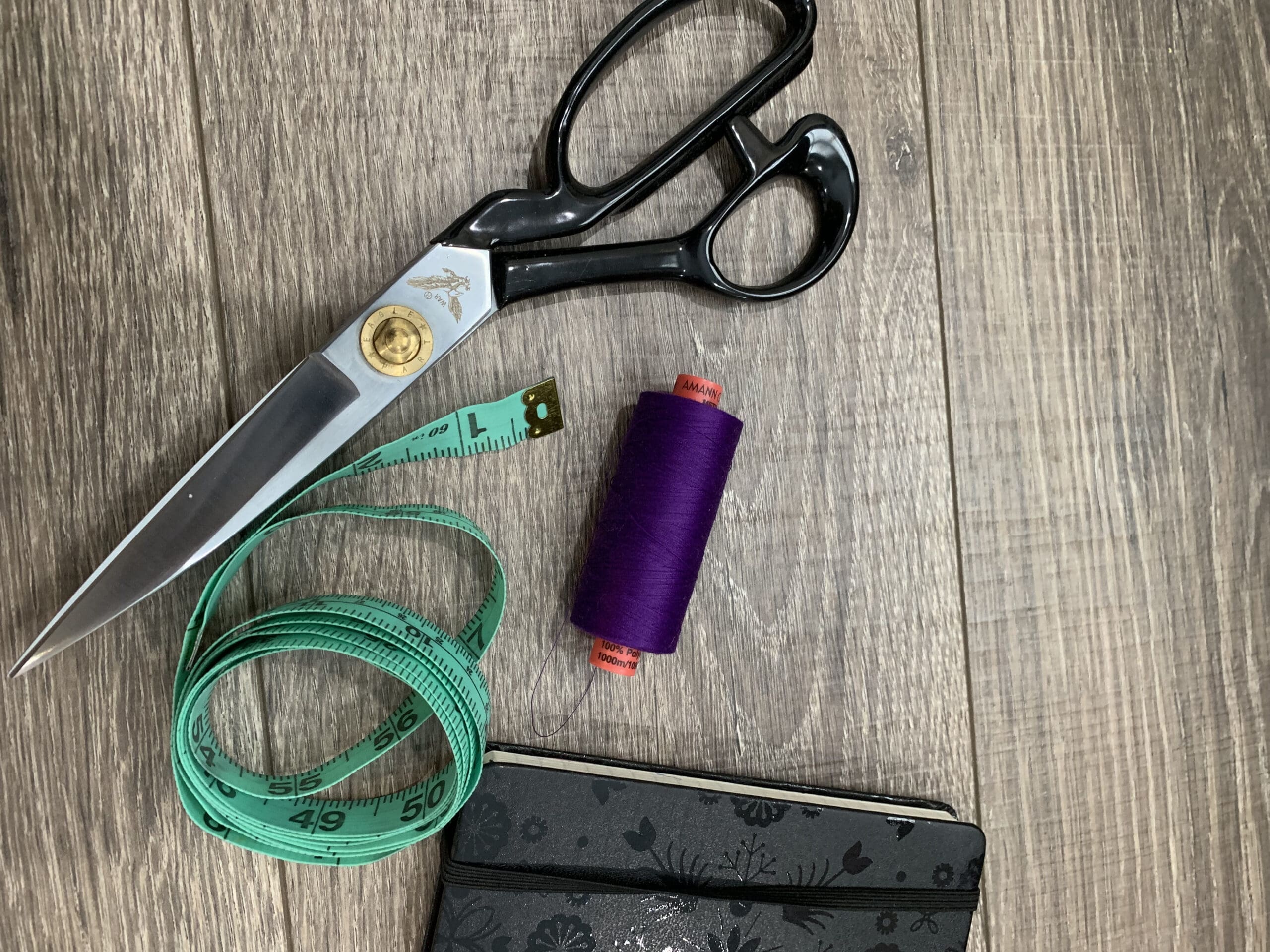The Best Presser Feet Every Sewists Needs

Don’t you love sewing machine presser feet? Well, I love changing my presser feet like I love changing purses. Hence, this post is all about the five sewing machine presser feet everyone needs. Different purses have different uses, and so do presser feet. As a beginning sewist, I just went with whatever the universal presser foot was for the machine.
First of all, what is a presser foot? A presser foot is an attachment that puts pressure on the fabric as it moves through the machine. The presser foot and feed dogs (underneath) gently move the fabric along. Without the presser foot and the feed dogs, the fabric would clump and bubble up or pucker.
Overtime my likes, dislikes, and favorites have changed, so the YouTube video below is my latest heartbeat:
The Zigzag foot
The sewing machine I currently use the most is a BabyLock Unity, and the universal foot is the zigzag ‘J’ foot. Some sewists would argue that the straight stitch foot is the most basic, and that might be true. You can only sew regular straight seams with this foot. No zigzags. No decorative stitches, just straight. That being said, I almost never use it. In my opinion, the ‘J’ foot is as universal as it gets.
It’s a great all-around champion. It’s partly clear, which comes in handy when you are sewing and need to see where you are going. It is a sewing and sewing machine essential, but there are others. There are so many feet you can choose from, but choosing the right one for the job can make your life so much easier, especially when sewing garments.
The Zipper foot
This is the ‘I’ foot on the Baby Lock, but even when I was sewing with my Bernina and my Kenmore, they all had a zipper foot. Where would we be without this foot? If you sew any clothing, you can not live without this foot. Can you put in a zipper without it? Sure. Will it be pretty? I don’t know. But if you use this foot, you can make it beautiful. You can get dangerously near and quite close to the zipper teeth. With a little skill and effort, this foot is a dream. Never let the title of the foot limit its use. The zipper foot can help you perfectly topstitch on jeans, insert cording or piping, and much more. Now don’t get me wrong, there is a cording and piping foot, but you can use the zipper foot. Anything requiring trim, like flat trim such as rick-rack, can be sewn using the zipper foot
The Invisible Zipper Foot

Ah, the invisible steamy, dreamy zipper foot. It’s hot in here, but the zipper foot just stepped on the scene. I almost exclusively sew invisible zippers when I’m installing a zipper. I’ll even convert a lapped zipper to an invisible zipper depending on the style, type of dress, or pants.
The Button attachment foot

What? You’ve never heard of a button attachment foot? For Babylock, it’s the ‘M’ foot. It looks like a forklift, and it can perfectly attach a button. Yes, you heard me right. I actually sew the button and tie a knot on the back. Who knew? So between your buttonhole maker and your button attachment foot, you can make any shirt or button-up garment sharp as a pin. I did a YouTube tutorial here if you don’t know how to put on a button using this special foot.
The Walking foot or the Dual feed foot

Have mercy? Queens, if you sew knits, swimwear like Vogue 9192, Athleisure wear like McCalls 8244, or anything that wiggles or moves, you must have this foot. I know. It’s a large sewing monstrosity and looks intimidating, but it’s quite easy to use. I sew a lot of knits and swimwear. Before I knew what this foot did, I learned a number of techniques to keep the fabric from over-stretching and keep fabrics sewn properly at the seam allowance, but it was a challenge. Using the dual feed sewing foot, also known as the even feed foot, is like having an extra hand. The little mini conveyor belt serves to help keep two fabrics together. I know a lot of people who sew use this foot for quilting, but I use it for garment sewing, especially with knits

